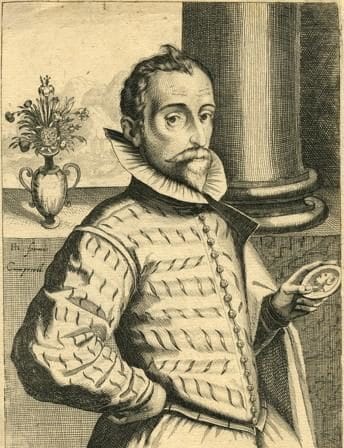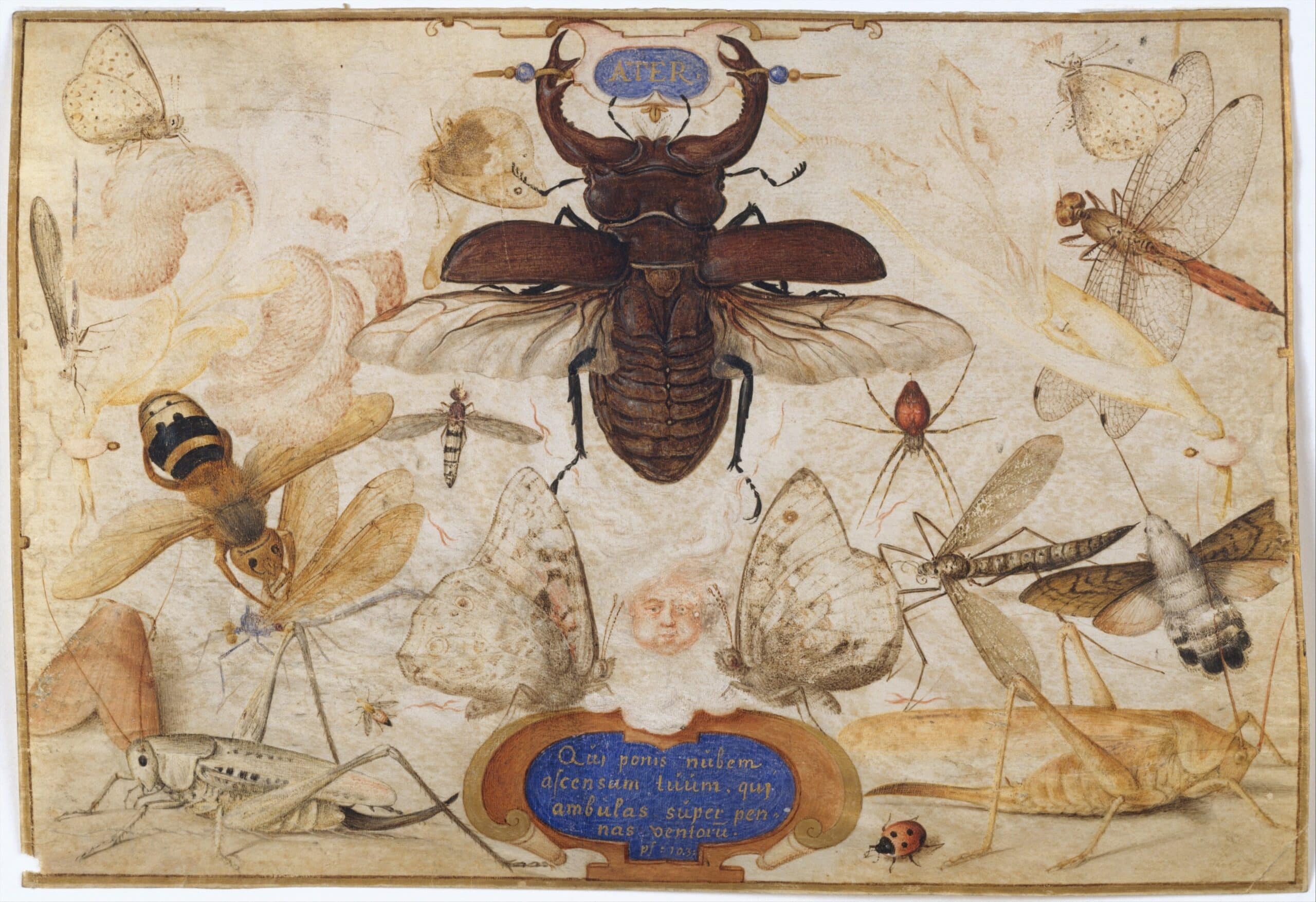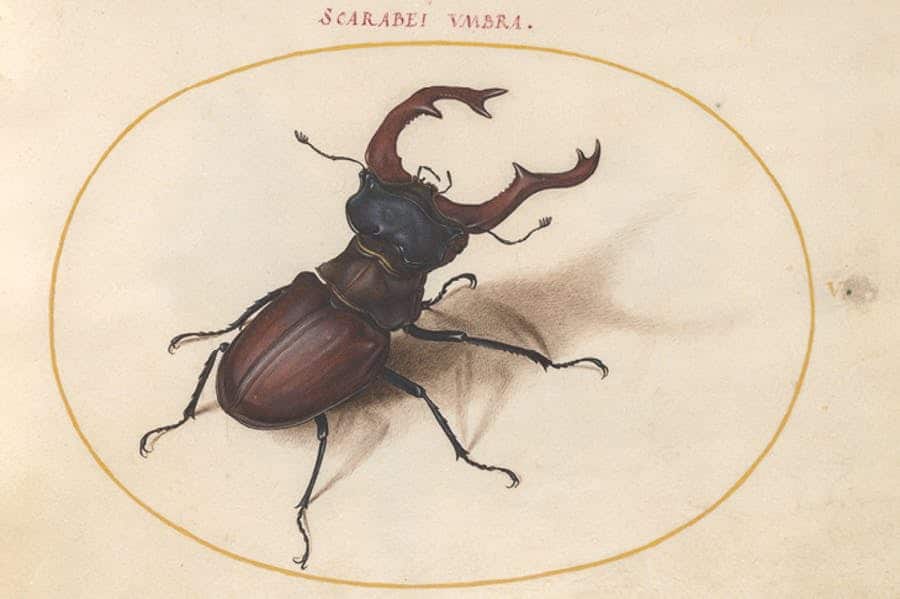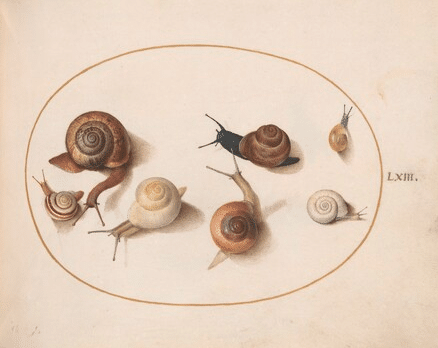Joris Hoefnagel and the Solace of Nature during the Dutch Revolt
The Renaissance polymath Joris Hoefnagel is best known today for his stunning miniatures of insects, but less well known is the troubling context in which those works were made. Marisa Anne Bass’s recent book Insect Artifice: Nature and Art in the Dutch Revolt (Princeton University Press, 2019) recovers Hoefnagel’s firsthand response to the Dutch Revolt and addresses the way that the experience of war and emigration motivated his turn to art and the study of nature.
 Portrait of Joris Hoefnagel. Engraving by Simon Frisius, 1610
Portrait of Joris Hoefnagel. Engraving by Simon Frisius, 1610© Wikimedia Commons
The first book devoted to insects in the history of art and science is a testament to the challenge of understanding nature’s smallest visible kingdom. The volume was the work of an Antwerp-born polymath named Joris Hoefnagel (1542–1600), who was raised as a merchant and became throughout his life a scholar, poet, draftsman, print publisher, art dealer, and miniaturist. This professedly self-taught artist employed the media of watercolour, gouache, and gold to produce some of the most dazzling miniature paintings ever made. His favourite subjects: the specimens of the natural and non-human world.
 Plate III from Animalia Aqvatilia et Cochiliata (Aqva), ca. 1575-1580
Plate III from Animalia Aqvatilia et Cochiliata (Aqva), ca. 1575-1580© National Gallery of Art, Washington
Hoefnagel’s book of insects survives today in the National Gallery of Art in Washington D.C. along with three other volumes that he devoted to representing the creatures of earth, air, and sea. They are dated to the last decades of his life, sometime between the 1570s and his death in 1600. Now known as the Four Elements, these manuscripts are a jewel of the National Gallery’s holdings. They are kept under lock and key, seldom displayed, and considered so precious that only a curator may turn their pages.
 Insects and the Head of a Wind God, ca. 1590-1600
Insects and the Head of a Wind God, ca. 1590-1600© Metropolitan Museum of Art, New York
As an art historian, I often have the privilege of viewing works of art in the vaults of museums and special collections. Yet the experience of studying Hoefnagel’s manuscript was something different. Four centuries later, his miniatures of insects are still arresting. They transcend the time and place of their creation in a way that few historical works of art do. Over the years that I studied the miniatures of Four Elements volumes, and recorded the over one thousand inscriptions that Hoefnagel penned among their folios, I often had the feeling that I was entering into a privileged space. Although the manuscripts contain many remarkable observational studies of species, they are more like a personal album of personal thoughts and reflections than a dispassionate naturalist’s notebook.
Hoefnagel’s insect studies, in particular, are a far cry from modern scientific publications that they had often been taken to presage. Working before the invention of the microscope and long before etymology was an established field of study, Hoefnagel produced images that are much more than the sum of his empirical observations. He created his manuscripts not for a wide scientific public but instead for himself and his small circle of friends. These are works that reveal the patient labour of an individual who read and travelled widely, who never stopped asking questions, and who struggled to create in the face of troubled times.
 Dragonfly, Pear, Carnation, and Insect, ca. 1595
Dragonfly, Pear, Carnation, and Insect, ca. 1595© Wikimedia Commons
Born in the city of Antwerp, Hoefnagel journeyed to Spain and France in his early years both for business and to pursue a university education. But as the mounting Revolt of the Netherlands disrupted the economic and political stability of his native city, Hoefnagel increasingly turned to art as a source of solace and refuge. In 1576, when the Spanish Fury hit Antwerp and his family fortune was plundered by Spanish soldiers, Hoefnagel felt compelled to flee in search of better prospects abroad. His talent for miniature painting led to his employment at various courts across Europe from Munich to Vienna, where he eventually entered the service of Emperor Rudolf II. The manuscripts that he illuminated as a court artist were designed to please his patrons and to complement the works of art and nature in their expansive collector’s cabinets. These cabinets were themselves expressions of power. For Rudolf, collecting was a way of demonstrating his knowledge of the world and showcasing his ability to acquire rare objects from the far reaches of the globe. Eventually, the Four Elements also became part of Rudolf’s capacious collection.
Yet for Hoefnagel, the Four Elements were not just another expression of his virtuosity as an artist. His years of work on the Four Elements manuscripts were years of exile and self-reflection, and he found in his insect subjects – in their capacity for metamorphosis, and in the artifice behind their creation – a reminder that the machinations of human affairs were small compared to the vast and unknowable wonder of divine creation. On a few folios of his insect volume, Hoefnagel even pasted actual insect wings alongside their painted representation, staging a juxtaposition of nature and art in which he showed that nature is the clear winner. No matter how delicate and refined Hoefnagel’s brushstrokes, they are no match for the intricate geometries of the real thing.
 Plate V from Animalia Rationalia et Insecta (Ignis), ca. 1575-1580
Plate V from Animalia Rationalia et Insecta (Ignis), ca. 1575-1580© National Gallery of Art, Washington
The insects in Hoefnagel’s painted worlds seem on first glance to represent a perfect union of art and science. He depicted many insects that had never been represented before, and he did so with the most careful attention to their scale, colouring, and distinguishing features. Toward the end of his life, Hoefnagel’s son published a series of prints based on his father’s nature studies that circulated to a much broader audience than the original manuscripts. Over the course of the seventeenth century, Hoefnagel’s studies were used as models for the insects in still-life paintings and in treatises of natural history. They were considered authoritative sources and inspiration for future artists and nature lovers. This was an afterlife that Hoefnagel, in his years of arduous study and quiet contemplation, could never have anticipated.
It is crucial to recognize that Hoefnagel’s seemingly perfect painted worlds were created in the very imperfect world indeed – during an era of great social, spiritual, and political discord, and during the decades just before the establishment of the Dutch Republic. The Revolt of the Netherlands was in many ways a conflict much like those that confront us today, conflicts amidst which we too must seek out sites and sources of refuge.
 Plate LXIII from Animalia Qvadrvpedia et Reptilia (Terra), c. 1575/1580
Plate LXIII from Animalia Qvadrvpedia et Reptilia (Terra), c. 1575/1580© National Gallery of Art, Washington
In his reflections on the chaos of the ongoing war, Hoefnagel turned to the observation of bees, insects which since antiquity had offered compelling metaphors for civil society. Hoefnagel depicts his avian subjects in near symmetry on the page, emphasizing the harmonious communities that they create and presenting a model polity to which humankind might aspire. At the same time, he also acknowledges through an inscription in the margin that even nature’s makers of honey are not altogether peaceful; they too can sting. Hoefnagel’s insects, so he shows us, are not only stunning works of art. They also serve as a reminder of nature’s complexity and of all that it can teach us.












